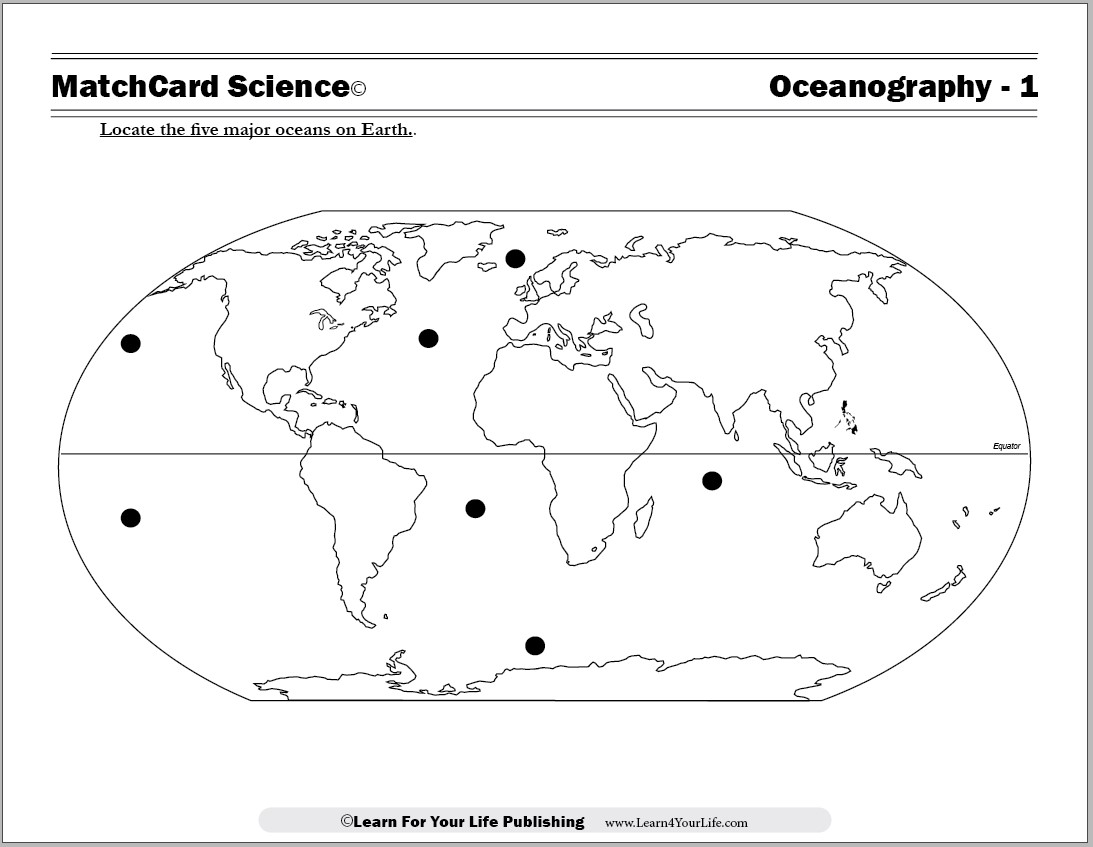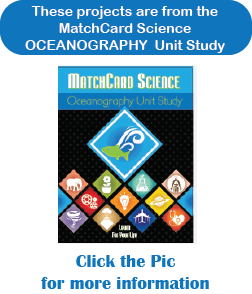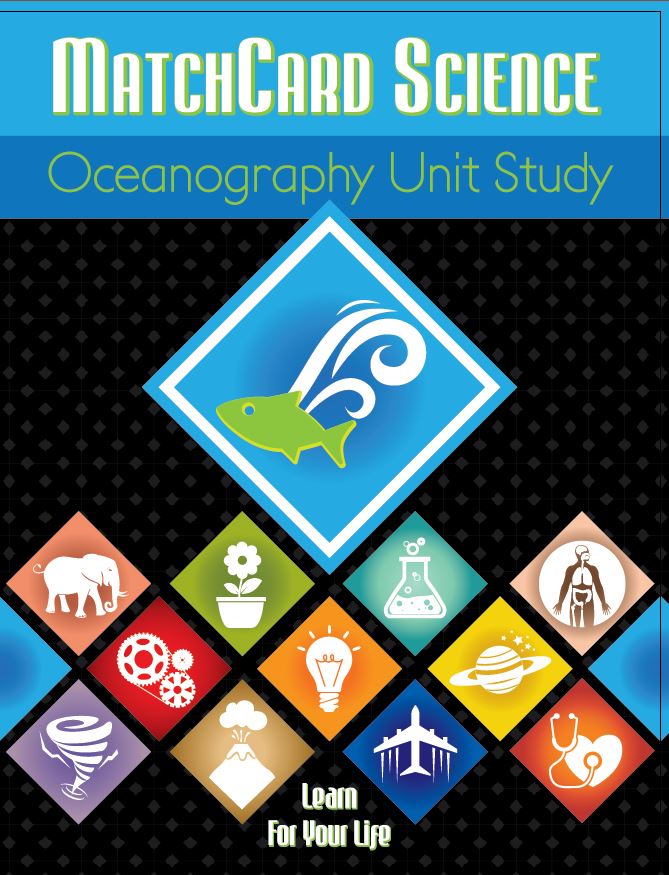Map of the Oceans
Learn the Major Oceans of the World
Kids will have fun using this map of the ocean and learning about the six oceans of the world.
Free Download Below


MatchCard Science Map of the Oceans
Objective: Locate the major oceans of the world.MatchCard: FREE Download below.
Use the Map of the Oceans and the Information Pieces to learn and review the names of the oceans: North Pacific, South Pacific, North Atlantic, South Atlantic, Indian, and Antarctic Oceans.
More instructions below on how to use the MatchCards with the oceanography unit study.
Add some hands-on (and feet on) activities to make learning fun and facts memorable.
Download and Use the Map of the Oceans MatchCard
This is MatchCard #1 of the Oceanography Unit Study. Look below for more information on MatchCards and the MatchCard Science curriculum.Name that Ocean
Use the MatchCard map of the world, or a larger map, and teach the six major oceans.Pacific Ocean
The Pacific Ocean is the largest ocean in the world. It makes up approximately 1/3 of the Earth's surface.It is divided into the North Pacific and South Pacific by the equator.
Atlantic Ocean
The Atlantic Ocean makes up approximately 1/5 of the Earth's surface. The water from more land area drains into the Atlantic than any other ocean.Like the Pacitic Ocean, the Atlantic is divided into the North Atlantic and the South Atlantic by the equator.
Indian Ocean
The Indian Ocean is the third largest ocean. It is easily recognized by students as it is south of the country of India.The Indian Ocean is the warmest ocean on the planet.
Antarctic Ocean
The Antaractic Ocean is also called the Southern Ocean. The Pacific, Atlantic, and Indian Oceans join with the Antarctic Ocean.There is not universal consensus on the boundaries of the Antarctic Ocean, but it is often classified as south of 60°S.
Arctic Ocean
The Arctic Ocean is the smallest ocean on the planet and has the most shallow depth. It is located in the upper northern hemisphere.Ocean Activities For Kids
Hop Around the Oceans
Here is a simple game to play to reinforce the location of the oceans.On a large, open floor space, make your own map of the oceans. Use yarn or string to outline the major continents. (The outline does not have to be exact.)
Write the seven ocean names (dividing the Atlantic and Pacific into their northern and southern zones). Read one ocean name, and a student has to jump to that ocean (without seeing the answer.) On his or her next turn, they jump to the next ocean named. Players are out if they go to the wrong ocean, or jump on land.
Go Fish
Students can play "Go Fish" with fact cards they make up about the different oceans. They need to research and find two or four facts about each ocean, which they write on seperate index cards. Go Fish would be played the usual way, except they have to match the facts about the same ocean.Map the Ocean Currents
Each of the oceans has their own unique currents. Choose one ocean and make a map of the currents.
Sailing the High Seas
(From Your Living Room
The oceans have always offered drama and adventure to land-bound creatures. Many great stories (fiction and non-fiction) have been written about humanities travels by sea. This would be a good time to enjoy one of the great literary classics in print, or even a movie. Find one of the great classic ocean stories for your kids to read.
MatchCard Science
How To Use MatchCards

Download the FREE MatchCard Science Instructor's Guide and see how MatchCards can make building their science knowledge base fun.
Ocean Unit Study

12 Science Unit Studies

Chemistry is only one of twelve complete unit studies for kids in 3rd to 8th grade.
Comprehensive objectives, hands-on projects, suggested science fair experiments, and the fun game-like MatchCards keep them interested in learning science. See all twelve MatchCard Science Unit Studies.
About Our Site
Hands-On Learning














